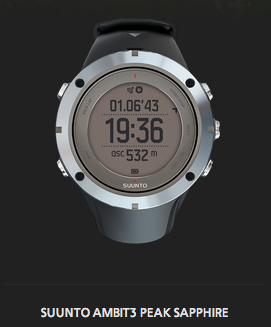Swimmer Math (Get Your Geek On)
 Friday, October 19, 2012 at 10:25AM
Friday, October 19, 2012 at 10:25AM 
(Left to right - Suunto Ambit, Sportsense Lap Counter, Finis Swimsense)
I used to do math problems in my head during high school swim team practice. You really can't do much else while swimming endless laps for hours, and hey, might as well "study" for that test in 3rd period.
Over the years, I've created mental shortcuts for calculating times per lap, laps per interval, and much more. Let's face it, most swimmers are academic types. There's a reason the best swim teams come from great colleges. If your kid is a geek, put that math whiz on swim team; he or she will be in great company.
Anyway, I wrote out some calculations for figuring out pacing a 2.4 mile swim in 1 hour flat, but in a 26 meter pool. That's my target and location for the Ironbaby next Friday.

Here's the way I figured it out and why:
- There's 3862.43 meters in 2.4 miles. ("How many meters in a mile" typed into Google search.)
- There's 3600 seconds in an hour. (60 minutes x 60 seconds each.)
- Divide 3862.43 meters by 3600 seconds and you get that you have to swim 1.07777777 meters per second to finish the entire 2.4 miles in one hour.
- Now, I have a 26 meter pool. That means I need to divide 26 meters by 1.07777777 to find out how many seconds I have to cross the pool each "lap" (or "length" if you call it that.)
- Answer? 24.23615 seconds per lap. Now let's figure out how to actually use this number to pace myself.
- I use a Timex Ironman watch with the looping timer function for this next part. It has by far the loudest beep of any decent waterproof watch I've come across yet. And you need to hear that beep.
- If I set the Timex watch to beep every time I should turn, then I'll know if I should speed up or slow down.
- Beeping every 26 meters is annoying, but beeping every 104 meters leaves a little too much room for falling behind and having to sprint hard to catch up. (I know this from experience.)
- So, we're going to set it to beep at me every 52 meters (2 laps/lengths) at which time I should be doing a flip turn. If it beeps before or after I get to the wall, I know I should change my pace a little to get back on track.
- If I double the 24.23615 seconds per 26 meters, then I come up with 48.47229 seconds per 52 meters. Oops, the watch doesn't do fractions of a second. What now?
- If I drop it down to 48 seconds per 56 meters, I'll have to swim a tiny bit faster. But how fast? Too fast?
- If I take the 3862.43 meters in 2.4 miles we had at the beginning, I can divide it by 26 meters and get the total number of laps for the swim - 148.5.
- If I want to go faster by about .5 seconds per 2 laps, then that is 1 second per 4 laps. I then divide 148.5 laps by 4 to get a total difference of 37 seconds faster overall.
- I subtract that 37 seconds from an hour to get 59:23 as my final time if I swim each 52 meters at a 48 second pace. That's not much difference, so I'll do it.
In summary, I'll set the Timex looping interval to 48 seconds and make sure I keep pace with the beep every "50". I'll also wear the lap counter on my finger and know that I'm done after swimming 148 and a half laps.
Why do all this? Because keeping an even pace on the swim sets you up for a great bike and run! Of course, you can't do this in open water... but actually you can. You could set a Garmin 910 to show you your pace while swimming and check it on a regular basis, speeding up or slowing down based on the numbers. Give it a try!














Reader Comments